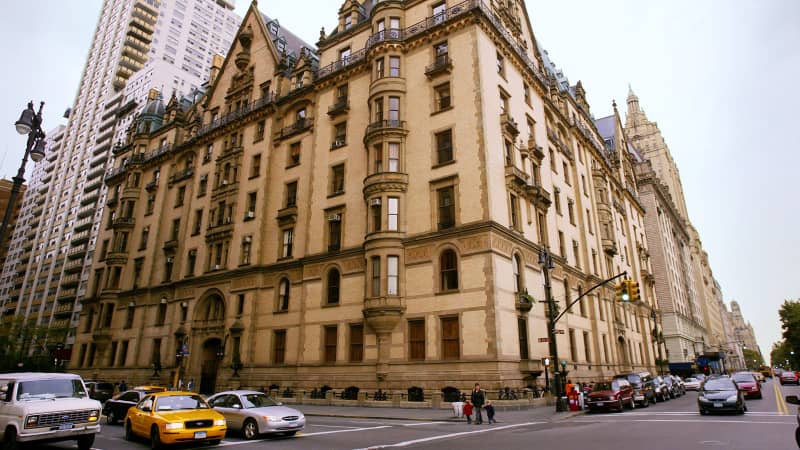Products You May Like
Editor’s Note — This article was originally reported and published in 2014 and has been updated and reformatted in 2019.
(CNN) — Death — life’s greatest unknown, and yet it comes to all of us.
This perhaps explains our fascination not just with death, but, in some cases, with the very places people have died.
Such locales needn’t have seen the demise of the many — the loss of an individual cultural or political icon can be just as emotive.
These places and the events that occurred there, often combining death, fame and power, can become a final reminder of the movements or messages their victims represented.
You can walk all these areas yourself, take guided tours or visit museums to learn more.
1. Julius Caesar
Stabbed in the Theater of Pompey, Ancient Rome. 44 BC
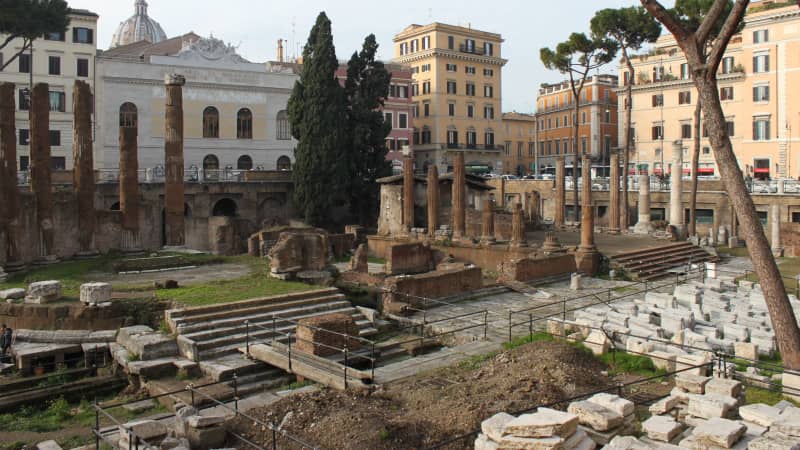
Julius Caesar was stabbed at the Theatre of Pompey. The site is now buried several meters beneath the Teatro Argentina, the white building at the back.
Courtesy Bija Knowles
The stabbing of Julius Caesar was a bloody, intriguing political killing that makes subsequent assassinations look simple dull in comparison.
It also set a precedent for conspiracy; up to 60 senators were involved in the plot to put an end to Caesar’s one-man rule.
He suffered 23 stab wounds, though only one was fatal.
It took place in a senate room just off the porticoes of the Theater of Pompey — not, as is often said, in the senate house in the Roman Forum.
The exact location is now buried several meters below ground.
According to local tour guide Stuart Harvey, it would have been roughly under the spot where Rome’s Teatro Argentina now stands.
Just across the busy road is the archaeological attraction known as Area Sacra di Largo Argentina, which gives a good view of the Roman temples that still stand just meters from where Caesar was stabbed.
“The senators were so sure they were doing the right thing in murdering Julius Caesar — they believed they were killing the dictator in order to preserve democracy — that they carried out the killing themselves, calling themselves ‘liberators,’ ” said Harvey during a 2014 interview.
It didn’t turn out quite as they planned.
The republic came to an end within a year and 17 years later, Octavian (Augustus) became Rome’s first emperor.
According to Suetonius’ account, few of the conspirators lived more than three years after the assassination.
2. John F. Kennedy
Shot in Dealey Plaza, Dallas, Texas. November 22, 1963.
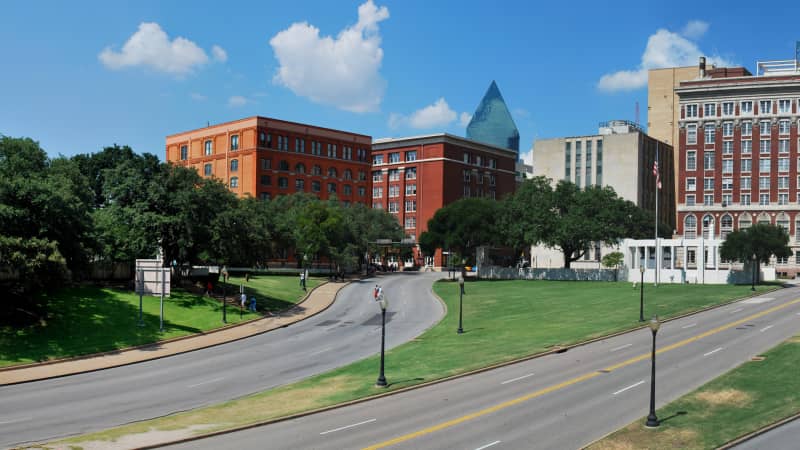
Dealey Plaza in downtown Dallas, Texas, is seared into the history of America.
Courtesy Sixth Floor Museum at Dealey Plaza
By late 1963, President John Kennedy was preparing for the election the following year, in which he fully expected to be re-elected.
As his motorcade drove through the open space of Dealey Plaza in downtown Dallas, Lee Harvey Oswald is alleged to have taken aim from the sixth floor of the Texas School Book Depository building.
The subsequent Warren Commission that investigated the assassination failed to establish a clear motive for the shooting, but it concluded that Oswald, a social misfit with possible anti-American sentiments, acted as a lone gunman.
Conspiracy theories have abounded and many believe Oswald, who was himself shot dead two days after Kennedy’s assassination by Texas nightclub manager Jack Ruby, didn’t act alone or that he was framed.
Since 1989, the Dallas County Historical Foundation has run a museum on the sixth and seventh floors of the building, telling the story of JFK’s life, his assassination and legacy.
Hundreds of thousands of visitors now come through the doors of The Sixth Floor Museum at Dealey Plaza each year.
Gary Mack, the museum’s curator, said that the museum was originally conceived as a place of remembrance, although most visitors don’t personally remember President Kennedy.
“As a history museum, we present the past and the Kennedy legacy,” says Mack. “The facts don’t change but the importance people place on them over time does.”
November 2019 marks the 56th anniversary since the assassination, but conspiracy theories still thrive.
“If it was an open and shut case, there wouldn’t be the intrigue there is today — a lot of people dedicate their whole lives to studying it,” said Freda Dillard, owner of DFW Historical Tours in Dallas, in 2014.
The plaza is relatively unchanged since that fateful day.
A white X marks the spot where the president was when the bullets struck.
3. Abraham Lincoln
Shot in Ford’s Theatre, Washington, D.C. April 14, 1865,
Abraham Lincoln was famously opposed to slavery and its spread across the United States and its new territories.
He was also a theater-lover and is quoted as saying, “Some think I do wrong to go to the opera and to the theater; but it rests me. I love to be alone, and yet to be with people.”
He was at Ford’s Theatre with his wife, Mary Todd Lincoln, and two other guests, watching a stage performance of “Our American Cousin” when the actor John Wilkes Booth, a Confederate supporter who opposed the abolition of slavery, entered Lincoln’s theater box and shot him in the back of the head.
Lincoln died the next morning.
Today, Ford’s Theater is still in use as a playhouse, education center and museum.
“At Ford’s, people can connect with the history of Lincoln but also with his humanity,” said Ford’s Theater director Paul R. Tetreault.
“We strive to bring history to life. … It’s a fitting tribute to Lincoln’s legacy and love of the arts — especially theater.”
4. Mohandas K. Gandhi
Shot in the grounds of Birla House, New Delhi, India. January 30, 1948.
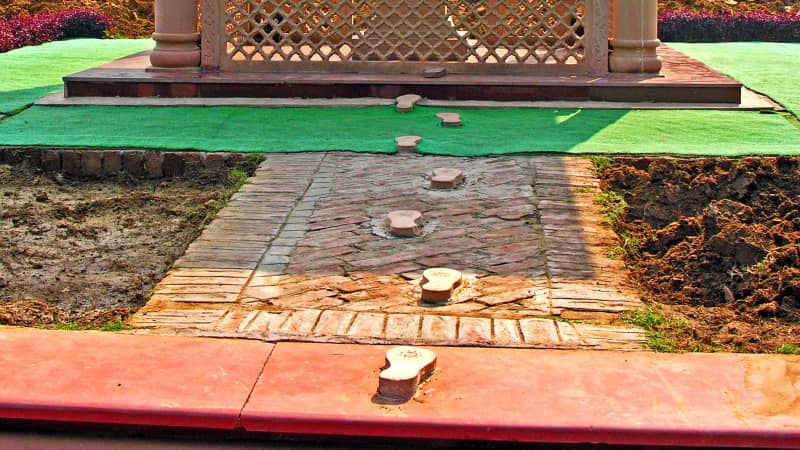
Mahatma Gandhi was shot by Nathuram Vinayak Godse, a Hindu extremist, at Birla House, which has since been renamed Gandhi Smriti.
Courtesy Dennis Jarvis
On his way to a daily prayer meeting, Mahatma Gandhi was shot by Nathuram Vinayak Godse, a Hindu extremist who opposed Gandhi’s nonviolent teachings, perceiving them to favor Muslims over Hindus.
Godse also believed Gandhi was responsible for the partition of India in August 1947, which had led to religious violence.
Gandhi’s death in January 1948 sent shock waves across the world.
A report that evening in The New York Times said: “His death left all India stunned and bewildered as to the direction that this newly independent nation would take without its ‘Mahatma.’ ”
At the time Gandhi was staying at the home of a friend, the Indian businessman G. D. Birla.
Birla House was subsequently bought by the government and renamed Gandhi Smriti — a memorial and museum dedicated to the life and teachings of Gandhi.
It’s open to visitors and holds cultural and social activities.
5. John Lennon
Shot outside the Dakota, New York City. December 8, 1980
As he returned from his recording studio late on a December night, John Lennon was shot four times just inside the driveway of his home at the Dakota apartments on 72nd Street and Central Park West.
There’s no memorial at the Dakota itself. But just inside Central Park, there’s a memorial area called Strawberry Fields, funded by Yoko Ono, which features a mosaic depicting the word “Imagine.”
The Dakota is a major sight on New York tourist itineraries — it’s also the former home of Leonard Bernstein, Boris Karloff and Rudolph Nureyev and was used as the set for movies “Rosemary’s Baby” and “Vanilla Sky.”
“The Dakota was the city’s first luxury apartment house — prior to that wealthy people lived in mansions or townhouses, not — the shame of it! — with other people under the same roof!” said New York guide Mark Levy.
“When it was built in the 1870s, it was so far uptown from the rest of developed New York that a critic said ‘You might as well build it in the Dakotas’ and the owner, having a sense of humor, named it the Dakota.”
Mark David Chapman, who had mental health problems although he didn’t in the end plead insanity in court, is still in prison in 2019.
He was a born-again Christian and felt angry about Lennon’s comment (made in 1966) that the Beatles were “more popular than Jesus.”
He also resented Lennon’s wealth, which he thought didn’t fit with the messages and lyrics of Lennon’s music (“imagine no possessions”).
6. Martin Luther King Jr.
Shot at the Lorraine Motel, Memphis, Tennessee. April 4, 1968.
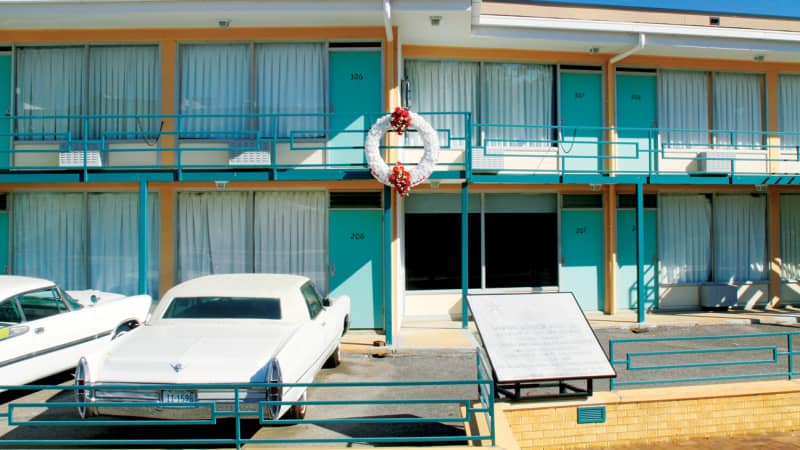
The Lorraine Motel is now the National Civil Rights Museum and a somber reminder of the plague of racism.
Courtesy National Civil Rights Museum
The Nobel Peace Prize winner was shot as he stood on the balcony of his motel in Memphis, where he had gone to lead a march in support of striking city workers.
Just as with JFK’s assassination four and a half years earlier, not everyone was convinced that James Earl Ray was the assassin or that he acted alone.
Conspiracy theories took root that government agencies could have been involved.
The possible motive? King had posed a threat to the status quo and had also been an outspoken critic of the Vietnam War.
The Lorraine Motel was eventually turned, with funding from local people, into the National Civil Rights Museum.
Rooms 306 and 308 — rooms King often stayed in — were preserved, as was the motel’s exterior.
“The museum exists because everyday people in Memphis, mostly black Americans, committed themselves and their dollars to help make the museum a reality,” said Barbara Andrews, director of education and interpretation at the museum, said in 2014.
“Dr. King was assassinated here and for too many African Americans who paid the ultimate price for rights guaranteed in the Constitution but withheld because of race, there are too few markers or notations of their sacrifices to help move America to a more perfect union.”
7. Grigory Rasputin
Killed at the Yusupov Palace, St. Petersburg, Russia. December 1916.
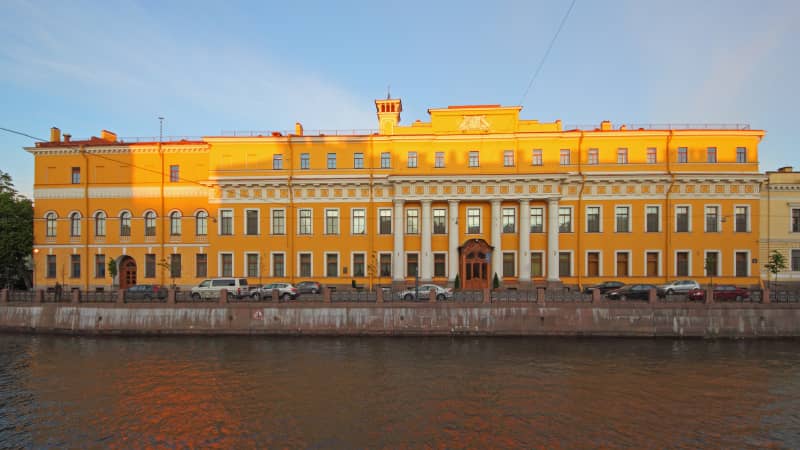
Yusupov Palace is the site where repeated attempts had to be made before Grigory Rasputin was killed.
Courtesy A. Savin
Months before they were hounded out by the 1917 revolution, Russia’s already stressed nobles had another problem on their plate: Grigory Rasputin.
They feared Rasputin, a big-bearded bear of a man who claimed mystical healing powers, was exerting undue control over the Russian royal family and sought to bump him off one evening at the Yusupov Palace.
This proved no mean feat.
First poisoned cakes failed to fell him, then two bullets.
Eventually, he endured a beating and suffered a fatal shot before his body was dumped in icy waters of the Moika River, just to make sure.
The elegant yellow Yusupov Palace still stands by the Moika today and there are tours in English and Russian, as well as a Rasputin exhibition.
8. Archduke Franz Ferdinand
Shot in Sarajevo, Bosnia. June 28, 1914.
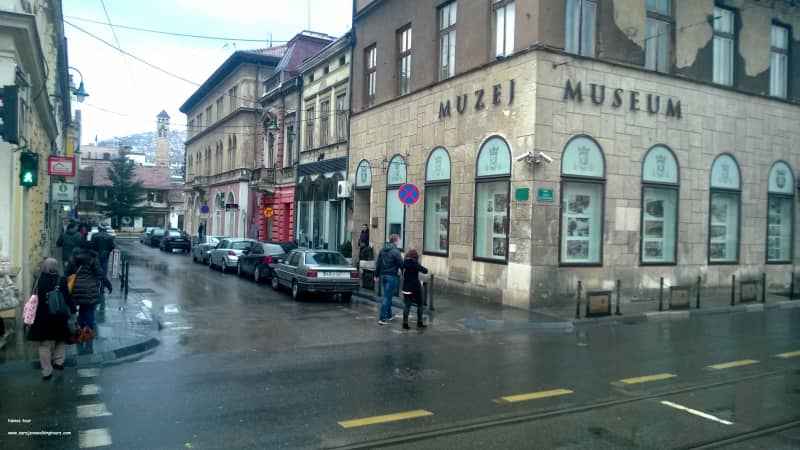
An assassination on a street in Sarajevo triggered a chain of events that led to World War I.
Courtesy Neno Novakovic
At his trial, Gavrilo Princip described himself as a Yugoslav nationalist who wanted independence from the Austro-Hungarian Empire.
He was standing outside a grocery store in a side street just off Sarajevo’s Lateiner Bridge moments before Archduke Franz Ferdinand of Austria pulled up in a car.
“The side street is very small, so Princip was standing just a few meters from Ferdinand’s open-top car,” said Neno Novakovic, who runs Sarajevo Walking Tours.
“Of course the location is of great interest to visitors — there is a plaque on the building where Princip stood — but the sequence of events triggered by the assassination are what make it so significant.”
The Museum of Sarajevo 1878-1918 now stands on the corner where events leading up to World War I began to escalate.
Princip, just 19 at the time, shot Ferdinand in the neck, and shot his wife Sophie in the stomach; both died as or soon after they were taken to the governor of Sarajevo’s residence.
9. Malcolm X
Shot in the Audubon Ballroom, New York City. February 21, 1965.

The facade of the Audubon Ballroom in New York City has been preserved.
wikiWHAT/Wikipedia Takes Manhattan
The Audubon Ballroom was a theater, ballroom and music hall in Upper Manhattan where Malcolm X’s Organization of Afro-American Unity held weekly meetings in 1964-5.
It was at one of these meetings that he was shot and killed by members of the Nation of Islam, the organization advocating black supremacy, which Malcolm X had repudiated the year before his assassination, having been one of its most prominent members for more than a decade.
The convicted killers were Talmadge Hayer and two other men identified as Norman Butler and Thomas Johnson. However, the latter two maintained their innocence.
Although the ballroom was (controversially) converted into a biotechnology research center in 1992, its original facade has been preserved and the second floor now has a mural depicting the life of Malcolm X and is home to the Shabazz Center (Malcolm X, born Malcolm Little, was also known as El-Hajj Malik El-Shabazz).
“I think it’s a very moving and effective space, which is inclusive to tourists and visitors,” said tour guide Mark Levy.
10. Thomas Becket
Killed at Canterbury Cathedral, England. December 29, 1170.

Vistors go to Canterbury Cathedral, where knights under orders of Henry II killed Thomas Becket.
Courtesy Canterbury Tourist Guides Ltd
Thomas Becket, Archbishop of Canterbury during the reign of Henry II, had angered the king by excommunicating three of the most powerful clergymen in the land.
Enraged, Henry II is said to have muttered that he wished to get rid of Becket, who was once his close friend.
Four of the king’s knights took him at his word and made their way to Canterbury Cathedral.
Becket was warned the knights were coming but he refused to bar the cathedral door, saying “the House of God shall be barred to no man.”
According to Lis Hamlin, director and guide at Guided Walks in Canterbury, Becket was making his way up the stone steps in the northwest transept, now known as The Martyrdom, when the knights entered.
“Becket would not recognize the area today; it was reordered in the 1470s but the northwest buttress (containing a spiral staircase) still remains from the Romanesque building,” said Hamlin.
“When Pope John Paul II came to Canterbury in May 1982 to pray in the Martyrdom with Archbishop Robert Runcie, he apparently commented that there was no reference to Thomas Becket.
“There is now a symbolic, modern (1986 by Giles Blomfield) Altar of the Sword’s Point in the Martyrdom. This is a reference to the severing of Becket’s ‘crown’ by Richard de Breton (one of the four knights) during which his sword broke on the flagstones; the broken sword point was placed by the monks on an altar.”
11. Leon Trotsky
Killed by icepick, Coyoacán, Mexico City. August 21, 1940.

Leon Trotsky’s villa where he was killed is now a museum you can visit.
Courtesy Jezabel Karlin Aguirre Reyes
Exiled to Mexico after losing a political battle of wills with Stalin, Russian revolutionary Leon Trotsky wound up with an ice pick in the back of his head.
The fortified compound in which Trotsky met his end was opened as a museum in 1990 to commemorate the 50th anniversary of the assassination.
At its center, the villa he shared with his wife has been preserved as it was during the bespectacled communist’s residency — his desk diary is still open at the day of his death.
The surrounding gardens include Trotsky’s tomb, replete with hammer and sickle, while additional buildings are used to display photos from his life.
Bija Knowles is a writer and journalist based in Rome, with experience in historical, social and cultural stories, particularly in Italy.


